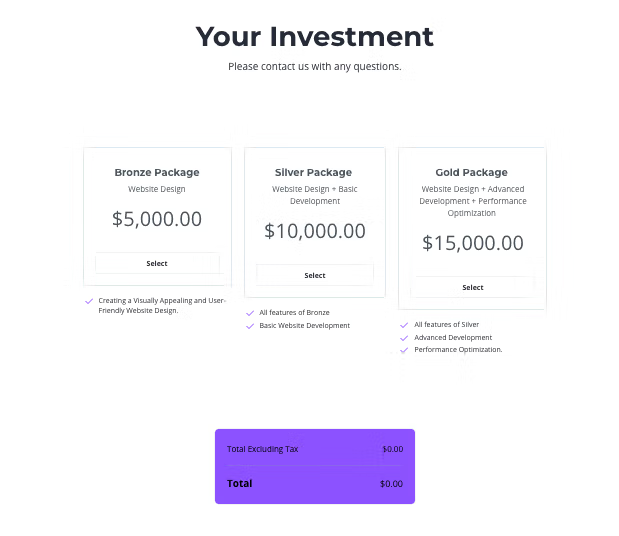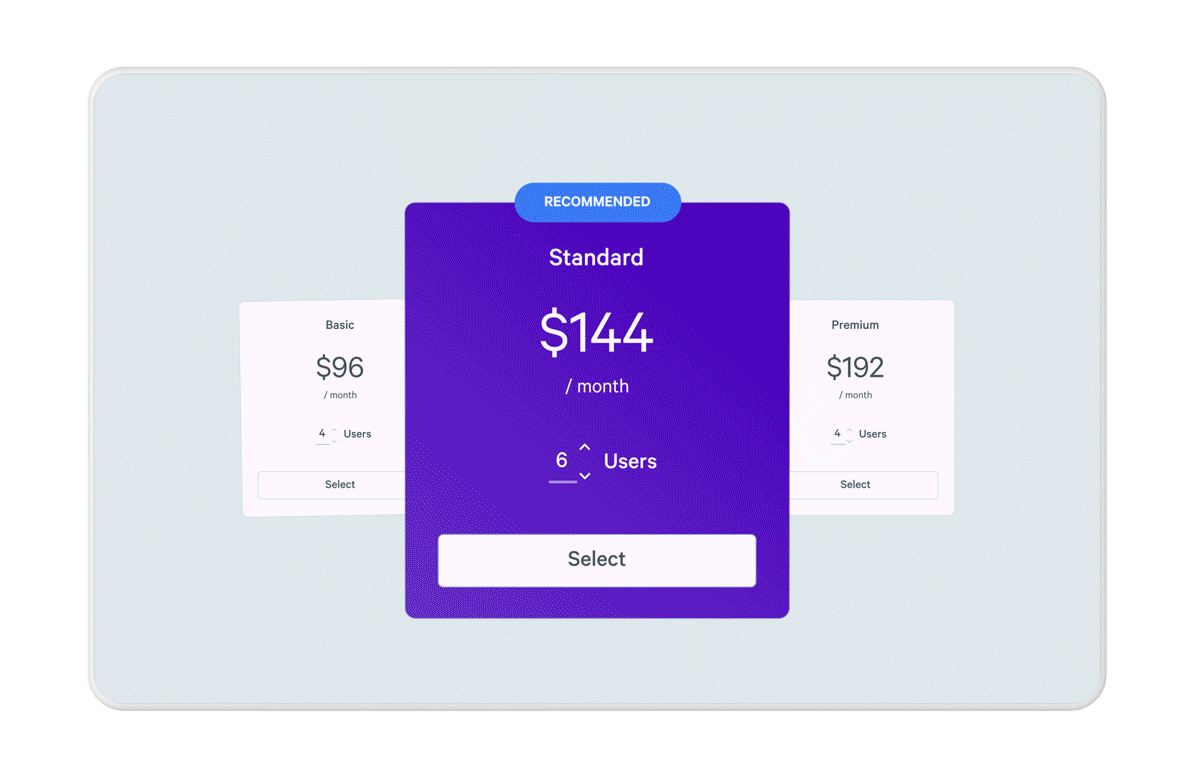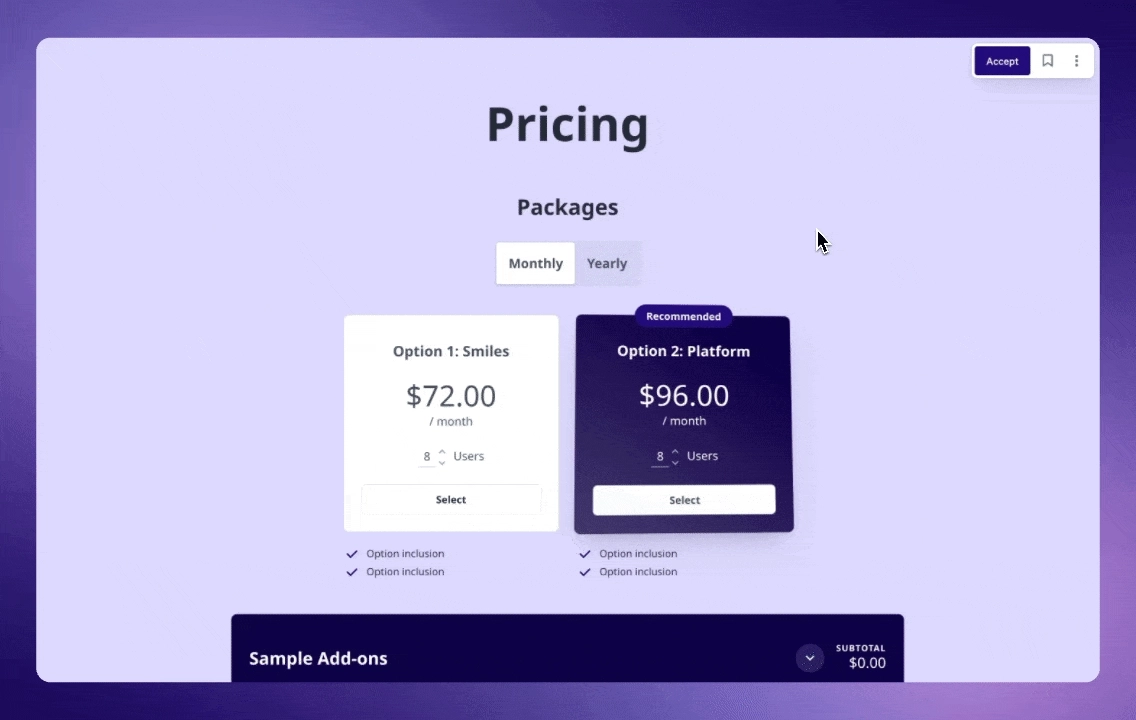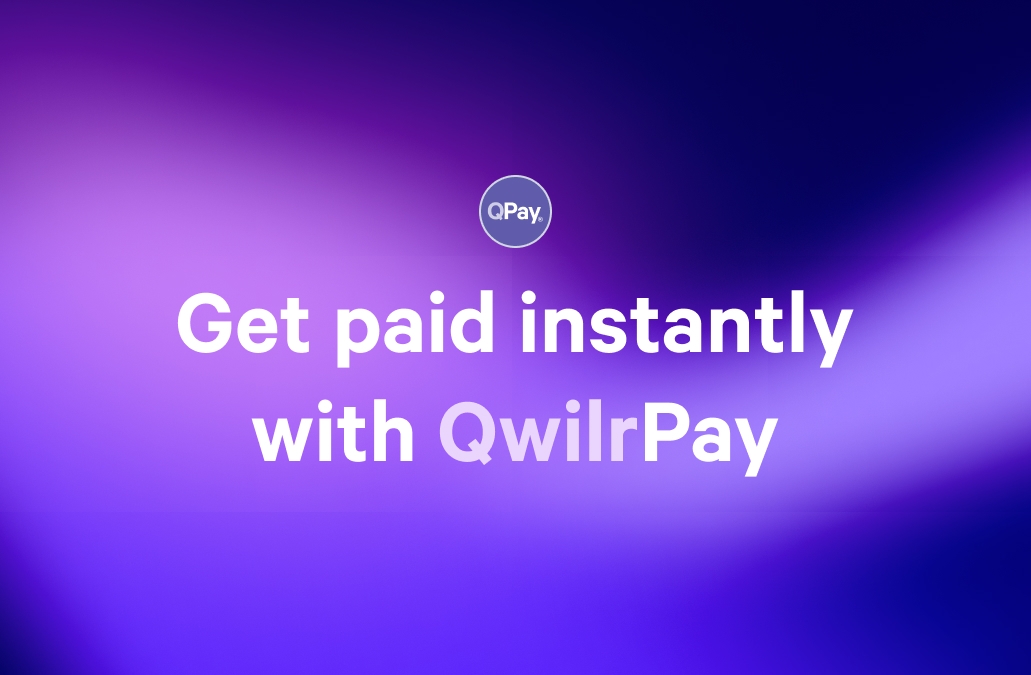"How much does a marketing agency cost?" is the business world’s equivalent of asking a Michelin-starred chef: "So how much for just one of your famous scallops?"
The response? Furrowed brow, the intake of breath, and the inevitable: "Well, it depends…"
94% of marketers say that offering a personalized customer experience has a major impact on sales, according to HubSpot’s Marketing Report. Pricing isn’t just a number, it’s part of the customer experience. Agencies that shape how pricing is perceived are closing bigger, better deals.
Key takeaways
- Agencies that design pricing as a narrative-driven experience, using psychology, personalization, and visual storytelling, win bigger, faster deals.
- Traditional pricing models like hourly and retainers are being reimagined with performance tiers, perceived value ladders, and hybrid structures to increase revenue and alignment.
- Pricing tactics like anchoring, effort reframing, and peak-end experiences significantly influence client perception and willingness to pay.
- Innovative models such as agile sprints, revenue sharing, and tokenized credits are reshaping how agencies capture value, scale operations, and build trust.
What are effective pricing models, and why do we need them?
An effective pricing model is a structured approach that agencies use to determine how they charge for services. It aligns the agency's value proposition with client expectations, ensuring clarity, fairness, and profitability.
Why they matter:
- Clarity and trust: Clearly defined pricing models help clients understand what they're paying for, fostering trust and transparency.
- Strategic alignment: They enable agencies to align their pricing with business objectives, market positioning, and client needs.
- Adaptability: In an evolving landscape, especially with the integration of AI, flexible pricing models allow agencies to adjust to new technologies and client expectations.
Act one: The pricing models you think you know
Let’s begin with the “classic” cast of characters. Most marketing agencies operate under a few well-worn models. Here’s the standard lineup, with their backstage flaws:
1. Hourly billing
The Pitch: You pay for what you get. Time is money.
The Reality: Clients feel nickel-and-dimed. Agencies feel underpaid for the genius work that took 30 minutes but saved the client 30 days.
Insider Insight: Top-tier agencies are quietly retiring hourly pricing for strategic work. The real value isn’t time spent, but thinking time. One creative director at a global agency told us, “Our best campaign this year came during a single espresso-fueled hour on a Saturday morning. We didn’t bill for the coffee.”
2. Retainers
The Pitch: A flat monthly fee for a set of deliverables or services.
The Reality: Great for predictability until scope creep arrives dressed as a “quick edit.”
Insider Trick: Some agencies are now building retainers with performance tiers. If the client hits revenue or lead benchmarks, the agency gets a bonus, or even equity. (It’s the Netflix model with upside!)
Tiered retainer models shine when visually represented. Agencies use Qwilr to present retainer levels in interactive tables or sliders, making upgrade paths clear and increasing upsell rates mid-contract. Present value-based packages (e.g., “Launch Plan,” “Scale Plan,” “Dominance Plan”) rather than time estimates.
This way, clients choose based on outcomes, not how many hours something takes.

3. Project-based pricing
The Pitch: One price for one project.
The Reality: It's clean, simple, and often a race to the bottom unless you differentiate hard.
Secret Weapon: Agencies that win at project-based work often use a “perceived value ladder.” They present three packages—Basic, Premium, and Platinum—each strategically priced so the middle one looks like the sweet spot. This isn’t new. Some agencies now intentionally design a fourth “unicorn tier”—an ultra-premium $100K+ package that no one ever picks…but makes the $25K package look like a steal.
The unicorn-tier trick works even better in a proposal that feels like a luxury product. Qwilr’s polished, branded templates let agencies present premium packages with cinematic flair, complete with embedded video intros and pricing logic that nudges clients toward the middle tier.
Qwilr’s visual blocks & modular layout
- Use elegant layouts to visually guide the reader through your methodology, frameworks, or unique process.
- Supports storytelling that positions you as a strategic partner, not a tactical vendor. Remember, it’s all about the narrative.

What most pricing articles forget: what it means to perceive
Here’s how the smartest agencies are bending perception to boost revenue, without changing a single deliverable, implementing a couple of psychology of sales tricks.
Anchoring bias in proposals
A Stanford behavioral economics study showed that presenting a high anchor (like a $100K option) can boost the perceived value of lower-priced tiers, even if the high option is never chosen. Agencies that use anchoring in pricing proposals see, on average, a 17–26% increase in average deal size, according to our informal review of 22 boutique agency proposals.
Anchoring only works if the presentation doesn’t feel like a spreadsheet. High-anchor packages can be paired with high-design layouts that cue prestige and justify value. Even if they’re rarely selected.
The “effort illusion”
Clients don’t like paying for “thinking time” because it feels intangible. Agencies that reframe ideation as “research sprint,” “strategy intensive,” or “diagnostic week” suddenly gain buy-in. Rename what sounds soft. Package what feels invisible. One agency even called its brand audit phase “The Detective Phase,” complete with a custom magnifying-glass-themed deliverable.
Qwilr format hack: Include “behind-the-scenes” workflows and team bios. It demystifies the magic and helps clients justify the price.
Peak-end rule pricing
Clients don’t remember every part of the agency experience. They remember the peak (most intense emotional moment) and the end (final delivery, presentation, or result)
Some high-end agencies use this psychology to front-load their process with a flashy strategic kickoff, including elements such as immersive brand workshops, full-day film shoots, or AI-generated campaign mood boards. Then, they end with a “closing experience” that includes not just the final files, but a champagne celebration or “campaign post-mortem dinner.”
These aren’t fluff. They are memory anchors. Agencies that build these into their pricing can often charge more with less friction.
The hybrid models nobody talks about
1. Agile sprint pricing
Inspired by product dev teams, some agencies offer 2-week “marketing sprints” at flat fees. Think: $15K for one sprint—includes strategy, content, and performance testing. This model kills scope creep and rewards speed. One startup-focused agency reported it doubled client retention after moving from monthly retainers to sprint-based engagements.
Qwilr use case: Sprint pricing works best when positioned like a product. Qwilr pages help agencies package sprint offers with defined timelines, making it frictionless to say “yes.”
Clickable feature lists and scope highlights:
- Use interactive checklists or bullet blocks to show what’s included in the sprint.
- Make it easy for clients to skim and understand value at a glance.
2. Royalty or revenue share
Still rare, but growing. An agency might develop a campaign or funnel and then receive a cut of the sales. One ecommerce agency structured its pricing as: “$5K upfront + 5% of all sales from this campaign over the next 6 months.” This aligns incentives but requires trust, data transparency, and airtight contracts.
Imagine this: Agencies building campaign assets as IP that they license. An agency retains ownership of a landing page template and licenses it to multiple clients with modifications, earning recurring revenue from a single core asset.
How Qwilr simplifies complex deals:
- Embed terms & clauses: Add legal terms, IP rights, and licensing directly into proposals.
- Contract-ready fields: Clients can fill in key details (e.g., rev share%, license duration) on the spot.
- E-signature integration: Clients sign contracts instantly, no switching apps.
- Payment collection: Add payment links for instant deposits or full payments.
- Audit trail & version control: Track edits, approvals, and updates for transparency.

3. Equity-for-service
Agencies working with startups sometimes trade services for equity.
Few agencies make actual returns on equity deals, but those who do? Massive upside. Imagine one content agency took 1.2% in a startup they helped rebrand. Five years later: $1.6M return.
The trick? Choose startups not just with “potential,” but those with clear go-to-market traction. And negotiate anti-dilution clauses. Otherwise, your slice disappears faster than an organic reach update.
What agencies don’t put on their website
1. Pricing by buyer persona
Yes, some agencies dynamically price based on the persona of the buyer, not just the project. If you're selling to a CMO at a Series C startup vs. a founder at a Series A, you might present the same services at different levels of sophistication (and price).
This is not unethical, as long as the scope aligns with needs. It’s personalization at a pricing level.
Create multiple versions from scratch. Whether you’re pitching a seasoned Series C CMO or a bootstrapped Series A founder, Qwilr enables you to serve tailored value propositions, case studies, pricing, and language, all within a single proposal framework.
With smart analytics, you can track who’s viewing what, how long they engage, and when they revisit - giving you actionable intel to follow up with precision. Meanwhile, dynamic content lets you swap sections automatically based on variables like industry, company size, or deal stage. The result? Higher engagement, faster closes, and proposals that feel like they were written just for them - because they (almost) were.

2. The “portfolio piece premium”
When a project has the potential to win awards or build prestige, agencies may offer discounted pricing in exchange for creative freedom and public credit. Internally, this is sometimes called the “Portfolio Piece Premium.”
Conversely, if the brand is boring, the vertical is dry, and the campaign can’t be shown publicly? Agencies may quietly charge more. (They’re pricing in the pain.)
3. Time-to-margin pricing
A model that’s gaining traction: agencies price not on effort, but on how fast the work can deliver ROI. For example:
A brand positioning project that transforms a startup's investor pitch within 30 days?Worth more than six months of social media drip campaigns, even if the latter takes more effort.
This model prioritizes impact over inputs. Smart agencies now calculate pricing multipliers based on client runway and urgency.
Experimental models that might shape the future
1. Auction-based pricing
One creative collective tried a reverse auction for branding: clients bid what they were willing to pay, and the agency accepted the top three projects each quarter. Pricing ranged from $8,000 to $92,000. It created a buzz! AND gave the agency massive pricing data on perceived value across industries.
2. “Ghost mode” pricing
A concept gaining traction among UX and product studios: Clients pay a discount in exchange for no meetings, no revisions. The agency delivers “in ghost mode,” with one round of feedback max.
This is attractive to product-led teams and scale-ups who want speed over collaboration.
3. Tokenized creative credits
Yes, we’re entering web3 territory. One agency tokenized its services into “creative credits,” where clients could pre-purchase tokens at a discount and redeem them for services later. This helped the agency manage cash flow and client loyalty, though execution requires a strong back office and serious trust.
Your go-to pros & cons of common agency pricing models
All things considered, here is what you need to know. All possibilities, tied up with a bow. The cat’s out of the bag.
| Pricing Model | The Pitch (Pro) | The Reality (Con) |
|---|---|---|
Hourly billing | Feels fair and straightforward- clients pay only for active time logged. | Encourages micromanagement and undervalues creative breakthroughs that happen quickly. |
Retainers | Provides stability for both agency and client, enabling long-term planning. | Often blurs boundaries on scope, making it hard to know where the work ends. |
Project-based | Clear deliverables tied to a set fee. Ideal for budgeting and timelines. | Encourages price-shopping, especially when results aren’t immediate or visible. |
Agile sprint pricing | Delivers fast, focused outcomes with minimal drag - great for startups and launches. | Can overwhelm clients unfamiliar with compressed workflows or rapid decision-making. |
Revenue share / royalties | Shared incentives align interests and create skin in the game. | Complex to administer, with potential disputes over attribution and reporting accuracy. |
Equity-for- service | Potential for long-term upside without needing upfront cash from clients. | High risk if the company stalls; difficult to value contributions accurately. |
Licensing / IP ownership | Generates passive income from reusable assets, scales beyond billable hours. | Requires strong legal footing and trust to avoid misuse or cloning by clients. |
Auction-based | Captures market demand in real-time and sparks curiosity. | Revenue can fluctuate wildly; difficult to forecast and resource consistently. |
Ghost mode pricing | Removes distractions and lets teams work autonomously and deliver faster. | Not suitable for clients who value iterative collaboration and close communication. |
Tokenized credits | Builds loyalty through pre-paid value and incentivizes ongoing engagement. | Operationally complex; clients may be confused without proper onboarding or tracking tools. |
Portfolio piece premium | Offers creative freedom in exchange for showcasing opportunities and recognition. | Not viable when the work is confidential or too niche for public case studies. |
Time-to-margin pricing | Prioritizes value creation over input volume, which helps clients see returns quickly. | Requires data and proof to support pricing: tricky when outcomes are qualitative. |
Example pricing structures from real agencies
To ground all of these models in reality, here’s a snapshot of how agencies are actually pricing their services across different structures.
Hourly billing
- Junior Copywriter: $90/hour
- SEO Strategist: $150/hour
- Creative Director: $300/hour. Agencies often pair this with detailed Qwilr proposal line items that show what’s billable and why.
Retainers
- Small business retainer: $5,000/month for ongoing blog, email, and social
- Mid-market growth retainer: $12,000/month for performance campaigns + reporting
- Performance-tiered retainer: $8,000/month base + $2,000 bonus if lead volume exceeds target
Project-based pricing
- Brand Strategy Sprint: $15,000
- Website Redesign: $25,000–$60,000 depending on complexity
- Product Launch Package (ads, landing page, email): $40,000
Agile sprint pricing
- 2-week sprint (strategy, content, ads): $18,000 flat
- Growth sprint (optimization, A/B tests): $12,000
Revenue share or hybrid
- Upfront + commission: $7,500 + 5% of campaign sales for 6 months
- Low base + upside: $3,000 setup + 10% of new MRR from paid ads
Equity-for-service
- Branding and GTM package valued at $20,000 for 1.5% startup equity
- Includes clause for anti-dilution and milestone-based vesting
Ghost mode pricing
- UX/UI Package (no calls, no revisions): $12,000
- Same package with full meetings and collaboration: $18,000
Modular or token-based
- 50 tokens for $10,000:
- Email Sequence = 8 tokens
- Landing Page = 12 tokens
- Video Script = 10 tokens Clients “spend” tokens across sprints via a Qwilr-powered dashboard.
Time-to-margin pricing
- Investor deck redesign (1-week turnaround): $9,000
- Monthly content calendar (6-week delivery): $6,000
These structures don’t just reflect cost, they signal value, sophistication, and alignment with client outcomes.
Curtain call: How to rethink your agency pricing philosophy
Pricing is a strategy. Your pricing tells the client:
- How confident you are
- What you think your work is worth
- Whether you see them as a commodity buyer or a co-creator
If you only remember one thing from this article, let it be this: The best agencies don’t just set prices. They design them.
Design your pricing experience like you’d design a brand: With a narrative. With psychology. With a clear sense of your unique edge.
Because in a world of infinite agencies and finite budgets, the ones who win aren’t just the best at what they do…They’re the best at pricing what they do. Sign up for a free trial with Qwilr and make your pricing escapades as easy as 1-2-3.
About the author

Dusty Martin|Revenue Operations Manager, Qwilr
Dusty is Qwilr's Revenue Operations Manager, working with a distributed sales team to drive revenue in the most efficient way possible.




